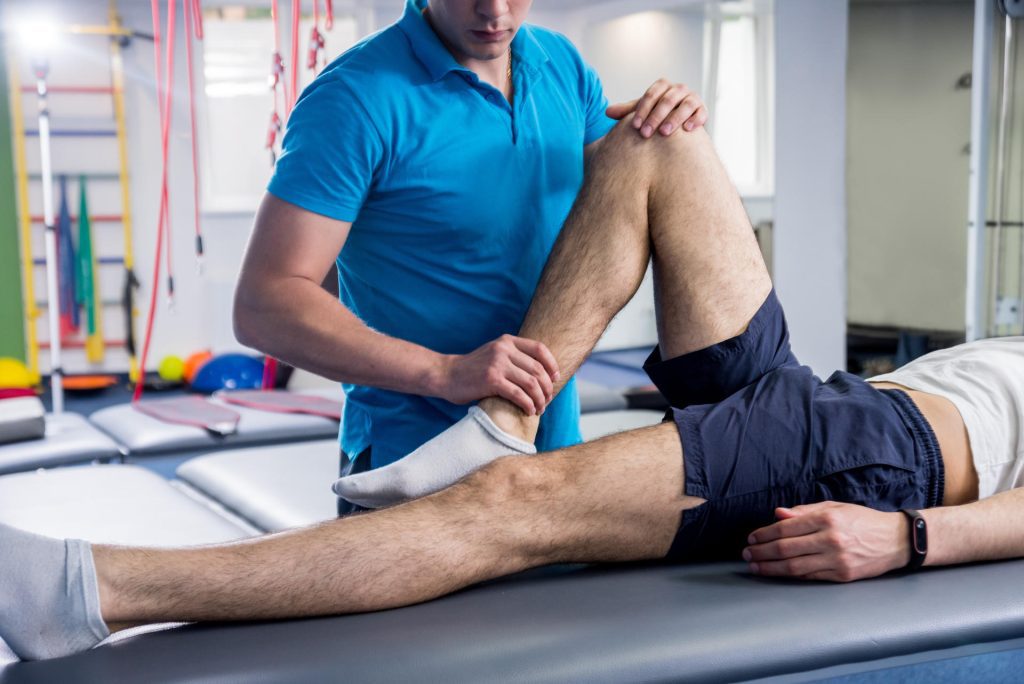A physical therapist evaluates and treats individuals with movement problems caused by injury or disease. They restore mobility, relieve pain and improve function.
Stick to your treatment plan, and follow your PT’s instructions. It’s important to do the exercises they give you, in the order and frequency they recommend.
Strengthening
Depending on your condition and goals, the therapist may prescribe specific strengthening exercises for your muscles and joints. These exercises are designed to improve muscle strength, increase joint flexibility and reduce pain.
A therapist may also use physical modalities, such as heat and electrical stimulation. These treatments can help ease pain and promote blood flow to the area.
In addition to strengthening, a PT can help you learn ways to manage your condition and prevent future injuries and problems. This includes educating you on how to safely and properly perform exercises at home, at work or in the community.
A great therapist can make an enormous difference in the quality of your life. Whether you’re dealing with an old injury or have chronic health issues, the goal is to get you back to the things you love doing. A good therapist will be patient and listen to your concerns and goals, then develop an individualized treatment plan for you. The first time you meet with your therapist, arrive early to complete any paperwork you need ahead of time.
Flexibility
PTs who specialize in flexibility focus on reducing the internal resistance of muscles, which reduces joint stiffness and increases muscle length. This enables more normal movement, improves posture and balance, decreases injury risk and increases performance in sports specific movements.
Often, physical therapists prescribe a series of stretching exercises for patients to do at home in between appointments. These stretches are designed to increase the range of motion in joints like the knee or hip. This increases the tendons ability to absorb energy, which in turn decreases lower back pain and joint strain.
The PT will likely require the patient to fill out a medical history and discuss their current condition. They may also ask for contact information of anyone involved in the case, including insurance companies or lawyers.
The patient should arrive early to complete any paperwork they may need to fill out before the appointment. They should bring all medications they are currently taking as well as their insurance card and claim number if applicable. They should also bring any diagnostic imaging, such as MRIs or CT scans.
Balance
A physical therapist can teach you exercises that improve balance and decrease your risk of falling. PTs can also help you find strategies to cope with balance problems, like using assistive devices to get around or modifying activities so you don’t need as much balance support.
Your sense of balance relies on a network of systems that communicate with each other, including the vestibular system in your inner ear, the visual system in your eyes, the proprioceptive system (which tells you where your body is in space) and the muscles in your legs and core. Any disruption in these systems or their connections can cause a loss of balance. Physical therapists can improve how these systems work together.
One of the most basic balance exercises is standing on one leg with your feet shoulder-width apart and then lifting that leg out to the side or behind you. A PT can gradually increase the challenge of these exercises by altering the base of support or changing the height at which you stand. They can also use a type of balance training called perturbation-based therapy to improve the control of your quick balance responses.
Coordination
A physical therapist uses coordination exercises to help patients improve their movements. Coordination requires the ability to select the right muscle groups at the right time and perform the movement correctly, whether it’s throwing a ball or walking in a straight line.
PTs work with clients on a one-on-one basis, which means they get to know their patients beyond their injuries or health-related conditions. “Because of that, a great PT is an effective communicator,” says Cesario. “They’re able to relay the information they’re receiving from their patient back to their patients in a way that makes sense and is understandable.”
A growing area of practice for physical therapists involves women’s health, including concerns like pelvic pain, menopausal issues, breast cancer rehab and lymphedema. PTs who specialize in this area can use their skills to help females of all ages improve their quality of life. This includes educating women on how to prevent or manage health-related conditions such as incontinence, pelvic/vaginal pain, prenatal and postpartum musculoskeletal issues and osteoporosis. They can also educate women on the importance of exercise, proper body mechanics and healthy eating habits.
Mobility
PTs are on their feet throughout the day and use their bodies to move patients, lift them and assist with daily tasks. This makes proper body mechanics essential to avoid injury.
Stretching exercises help protect muscles, tendons and joints from overstrain and can break up adhesions to prevent scarring or stiffness. They also help increase the flow of blood to muscles and joints to keep them loose and supple.
Physical therapists may also use therapeutic modalities, such as electrical stimulation or heat pads, to stimulate muscles and promote relaxation. Ultrasound transmits high-frequency sound waves to muscles and surrounding tissue to improve mobility by increasing circulation.
As you gain more mobility, your therapist will likely increase exercise intensity by adding resistance with bands or free weights. This builds strength to support your movements and improves coordination. They will also teach you how to perform daily activities safely to prevent injury and strain on injured body parts. Increasing mobility often takes time, but celebrate every milestone you reach on the road to recovery.



